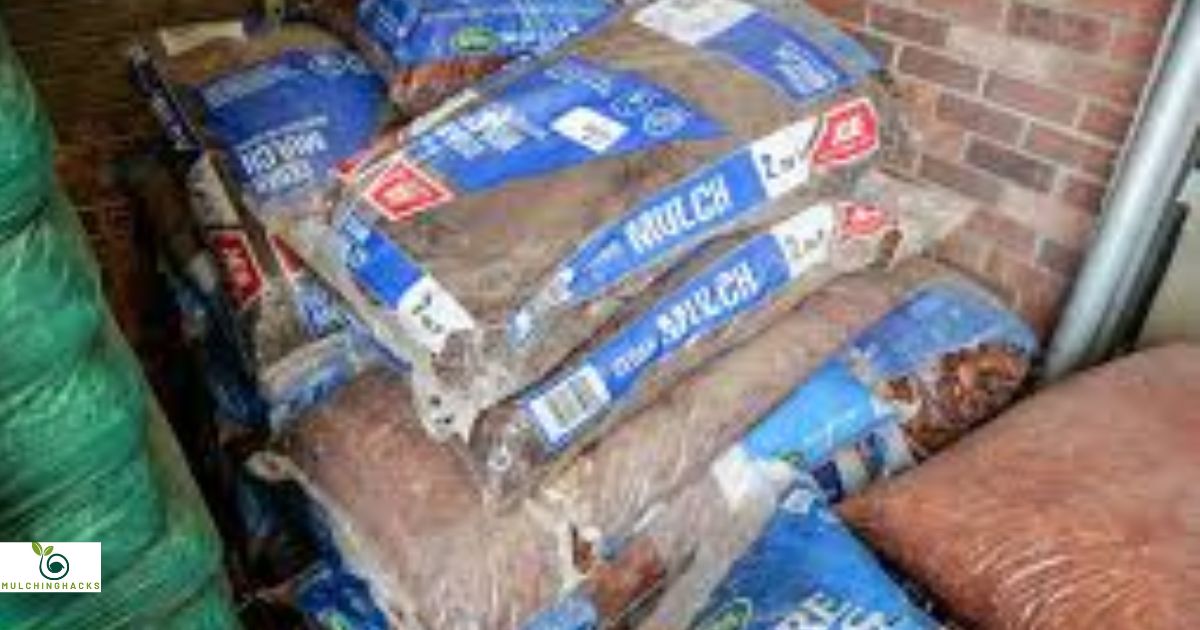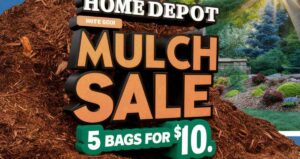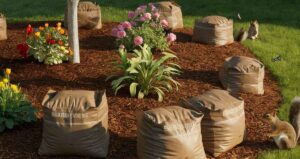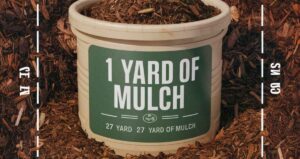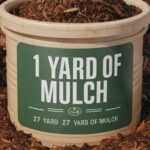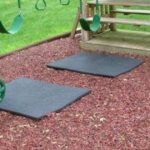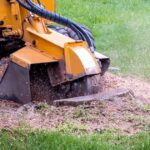Landscaping and gardening enthusiasts often turn to mulch to enhance the beauty and functionality of their outdoor spaces. While mulch offers a range of benefits, it’s essential to understand the logistics of handling and purchasing it. One key consideration is determining how many bags of mulch in a pallet. This comprehensive guide will explore the world of mulch pallets, bag sizes, standard counts, and factors that influence the number of bags, equipping you with the knowledge to plan your landscaping projects.
table showing the common number of bags of mulch in a pallet for various bag sizes:
| Bag Size (Cubic Feet) | Number of Bags per Pallet |
|———————–|————————–|
| 2 | 60 to 75 |
| 2.5 | 48 to 60 |
| 3 | 40 to 50 |
| 3.5 | 34 to 42 |
| 4 | 30 to 38 |
Please note that the exact number of bags per pallet can vary depending on the manufacturer and regional standards. Always check the product specifications when purchasing to ensure you’re getting the expected quantity.
The Significance of Mulch in Landscaping
Before delving into mulch pallets, it’s crucial to recognize the vital role mulch plays in landscaping. Mulch serves various purposes, from weed control to moisture retention, and adds an aesthetic touch to gardens and outdoor spaces.
The Need for Understanding Mulch Pallets
Understanding the number of bags in a mulch pallet is essential for efficient planning. Whether you’re a homeowner tackling a small garden project or a professional landscaper working on a larger scale, knowing the quantity of bags in a pallet ensures you purchase the right amount and achieve your landscaping goals.
Mulch Types and Bag Sizes
Varieties of Mulch Materials
Mulch comes in various materials, each offering unique advantages. Understanding these materials and their properties is essential when estimating bag counts.
Wood-based Mulch
Wood chips, bark, and shredded wood are commonly used for mulch. Different wood types have varying weights and textures, affecting bag counts.
Rubber Mulch
Recycled rubber mulch is an alternative to traditional mulch materials. It is lighter in weight, which impacts the number of bags in a pallet.
Stone Mulch
Stone mulch, like gravel or river rocks, provides an aesthetic appeal. Stone mulch bags are heavier, affecting bag counts.
Common Bag Sizes
Mulch is typically packaged in bags of different sizes, and the bag size has a direct impact on the number of bags you’ll find in a pallet.
Small Bags (e.g., 2 cubic feet)
Smaller bags are suitable for smaller gardening projects. They are easier to handle and transport.
Medium Bags (e.g., 3 cubic feet)
Medium-sized bags strike a balance between convenience and coverage. They are commonly used for residential landscaping.
Large Bags (e.g., 4 cubic feet)
Large bags provide excellent coverage for extensive projects. They are often used for commercial landscaping.
Specialty Bag Sizes
Some suppliers offer specialty bag sizes to cater to unique project demands.
Mini-Bags
Mini-bags are perfect for small garden beds and touch-up projects. They are convenient for minor landscaping adjustments.
Oversized Bags
Oversized bags are ideal for extensive landscaping projects. They reduce the number of bags required for large areas.
Standard Pallet Sizes and Bag Counts

Defining a Pallet of Mulch
Understanding what constitutes a pallet of mulch and its common uses is crucial to grasping bag counts.
What Is a Pallet?
A pallet is a wooden or plastic platform used to stack and transport mulch bags. Pallets simplify transportation and storage.
Common Uses and Benefits
Pallets make mulch accessible for various landscaping and gardening projects. They streamline the handling and distribution of mulch.
Bag Counts in a Standard Pallet
Different pallets contain varying numbers of bags, depending on the bag size and type of mulch.
The 2-cubic-feet Bag Pallet
Pallets of 2-cubic-feet bags typically contain 60 to 80 bags. These are ideal for smaller residential projects.
The 3-cubic-feet Bag Pallet
Pallets of 3-cubic-feet bags generally contain 45 to 60 bags. They are suitable for medium-sized residential landscaping.
The 4-cubic-feet Bag Pallet
Pallets of 4-cubic-feet bags usually contain 35 to 45 bags. These are often used for larger residential projects and some commercial applications.
Factors Affecting Bag Counts
Several factors can influence the number of bags found in a pallet.
Moisture Content and Weight
The moisture content of the mulch can vary, affecting the overall weight of the bags.
Wet mulch is heavier than dry mulch, impacting bag counts.
Mulch Type and Density
Different mulch types, such as wood-based, rubber, or stone, have varying densities.
The type of mulch affects the number of bags required to fill a pallet.
Calculating Bag Counts for Your Project
Determining the right number of bags for your specific project is vital to avoid shortages or excesses.
Measuring the Area to Be Covered
Measuring the area you plan to mulch is the first step in calculating bag counts.
Desired Mulch Depth
Determine the depth of mulch coverage your project requires. Deeper coverage will necessitate more bags.
Adjusting for Bag Size
Consider the size of the bags you intend to use. Smaller bags may require more to cover the same area compared to larger bags.
Practical Examples and Scenarios
Let’s explore real-world examples to illustrate how bag counts are calculated for different types of landscaping projects.
Residential Garden Bed Project
Calculating bag counts for a small garden bed project. Adjusting for bag size and depth requirements.
Commercial Landscaping Project
Estimating bag counts for a larger commercial landscaping endeavor. Accounting for oversized bags and efficient coverage.
Accounting for Extra Bags
When planning your mulching project, it’s essential to consider the possibility of having extra bags.
Avoiding Shortages
Having a few extra bags on hand can prevent the need for additional trips to the store.
It’s more cost-effective to have extra bags available.
Handling Unused Bags
If you end up with surplus bags, consider proper storage to prevent moisture damage or deterioration. Excess bags can be used for future landscaping projects.
Where to Buy Mulch and Pallets
Sourcing mulch and pallets is the next step after calculating your bag counts.
Local Garden Centers
Local garden centers are convenient sources for mulch and pallets.
Diverse Selection
Garden centers offer various mulch types and bag sizes. Local suppliers may provide insights and recommendations for your specific project.
Home Improvement Stores
Home improvement stores often carry mulch and pallets, making them accessible options.
Convenience and Availability
These stores are typically well-stocked with mulch and pallets. You can often find a variety of bag sizes and mulch types.
Online Retailers
Online retailers provide the convenience of purchasing mulch and pallets from the comfort of your home.
Wide Selection
Online platforms offer an extensive range of mulch types and bag sizes. You can read reviews and compare products before making a purchase.
Bulk vs. Bagged Mulch
Before buying, consider whether you should purchase mulch in bulk or opt for bagged mulch.
Advantages and Considerations
Buying mulch in bulk can be cost-effective for larger projects. Bagged mulch is convenient and suitable for smaller landscaping tasks.
Cost and Convenience
Weigh the pros and cons of each option based on the scale of your project and your budget.
Handling and Transporting Mulch Pallets
Once you’ve purchased your mulch pallets, understanding how to handle and transport them is essential.
Transportation Tips
Proper handling of mulch pallets is crucial for both safety and efficiency.
Loading and Unloading
Ensure safe and efficient loading and unloading of mulch pallets. Use proper equipment, such as forklifts or pallet jacks.
Safety Measures and Equipment
Use personal protective equipment when handling mulch. Follow safety guidelines to prevent accidents.
Legal Weight Limits and Regulations
Understanding legal weight limits and regulations is vital for transportation compliance.
Ensuring Compliance
Be aware of weight limits imposed by local authorities and transportation regulations.
Ensure your vehicle and equipment meet legal requirements.
Vehicle and Equipment Requirements
Ensure your transportation vehicle can safely carry the weight of mulch pallets.
Consider weight distribution and load-securing methods.
FAQ,s
How many bags of mulch are typically in a standard pallet?
A standard pallet of mulch typically contains 60 to 80 bags, but the exact number can vary depending on factors like bag size and type of mulch.
Do all mulch pallets have the same number of bags?
No, the number of bags in a pallet can vary based on the bag size, mulch type, and manufacturer. It’s essential to check the product specifications.
What’s the difference between small and large bag sizes in a pallet?
Smaller bags, like 2-cubic-feet bags, are ideal for smaller projects, while larger bags, like 4-cubic-feet bags, are suitable for larger landscaping endeavors.
How can I calculate the number of bags I need for my specific project?
To calculate the bags needed, measure your project area, determine the desired mulch depth, and adjust for bag size. Use these factors to estimate your bag count.
Conclusion
knowing how many bags of mulch are in a pallet is essential for efficient planning and successful landscaping projects. The number of bags varies based on bag size, mulch type, and other factors. Whether you’re working on a small residential garden or a large-scale commercial project, calculating the right number of bags ensures you have adequate mulch without excess or shortages. Understanding the diverse world of mulch types, bag sizes, and pallet counts equips you with the knowledge to make informed choices. By considering factors like moisture content, bag size, and your specific project requirements, you can accurately calculate the number of bags you need.
Selecting the right mulch source, whether from local garden centers, home improvement stores, or online retailers, further enhances the success of your landscaping endeavors. Additionally, being aware of handling and transportation procedures, as well as legal regulations, ensures the safe and efficient movement of mulch pallets. Incorporating these insights into your landscaping projects allows you to achieve the desired results while optimizing costs and resources. Whether you’re a seasoned landscaper or a novice gardener, this guide empowers you with the knowledge to make the most of your mulching endeavors.
